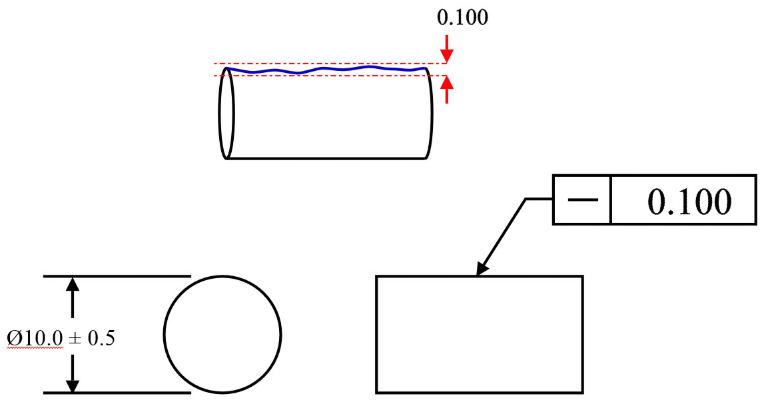What is Straightness & How to Measure Straightness | Difference Between Straightness and Flatness
The 2D drawings of 3D CNC turning parts may contain lots of straight lines, while the straightness can be used to control the line element of a feature within a specific tolerance zone. It indicates how straight the surface or axis is needed. Today, dajinprecision.com explores the straightness definition, measurement method and difference between straightness and flatness.

What is Straightness?
Straightness is one of the shape tolerances, which refers to the allowable variable momentum of a single shape, straightness is the total allowable variation of a single actual straight line. Simply speaking, it’s how accurately straight a target is.
In GD&T, straightness has two different functions: to control the straightness of a surface or an axis. Its normal form surface straightness, is a tolerance used to control the form of a line on the surface of feature. And the axis straightness, is a tolerance controlling how much curve is allowed in the axis of the machined part.
How to Measure Straightness
Straightness measurement is mainly through measuring the Plain wire straightness error of cylinder and circular cone, guideway of machine tool and other machines, and workpiece's straight guide surface. Measuring straightness can identify any warpage in long objects or workpieces.
1. Use a Coordinate Measuring Machine (CMM)
Put the stylus on the target lightly, operators can measure the straightness with CMM. The stylus can be placed on the object from different angles, then measuring the part that does not be secured level. This method is almost no error caused by measurement pressure.
2. Use a Height Gauge
Fix the part to be measured to make the height on the left and right is evenly matched, use small jacks to prevent the part from tilting. Move the workpiece or height gauge in a straight line, the difference between the maximum and minimum height (△H) is the straightness.
3. Straightness measuring instrument
There are specialized comprehensive straightness measuring instruments can not only measure straightness fast and accurately, but also can be used to measure flatness, squareness, and parallelism. But the price of the equipment is not cheap.
Difference Between Straightness and Flatness
1. Flatness is a property of a plane, while the straightness is about a straight line that only has length.
2. Flatness is the 3D version of surface straightness
3. Flatness should always be on a flat surface, while straightness is usually put on surfaces that are not flat, it specifies how much the surface or axis is allowed to vary from the perfect straight line. Straightness tolerance often applied to cylindrical features to control bowing and other distortions. When straightness applied to flat surfaces, it refers to the longitudinal element of the surface that must lie within the tolerance zone specified.
4. For surface shapes, flatness = 1/bumpiness; and regarding linear shapes, straightness = 1/curviness.
